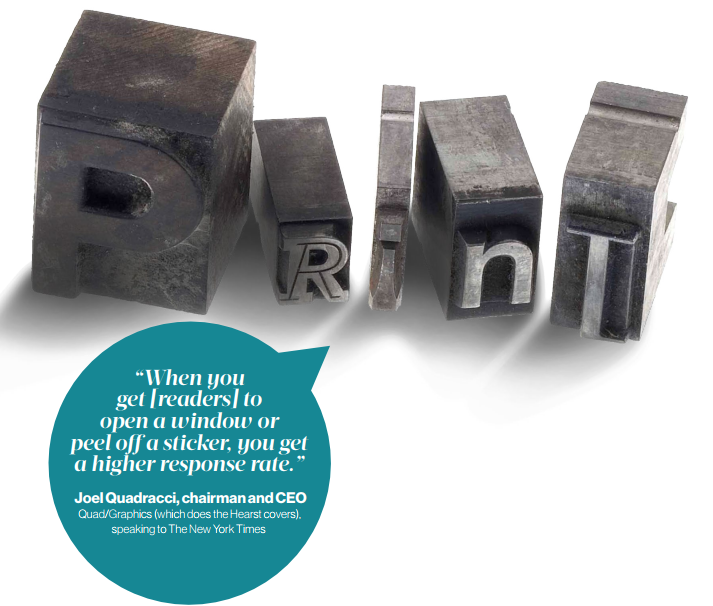
30 Mar How can Print Compete with Digital? Imagination and Creativity!
OK, let’s just say this out loud right now and get it out of the way:
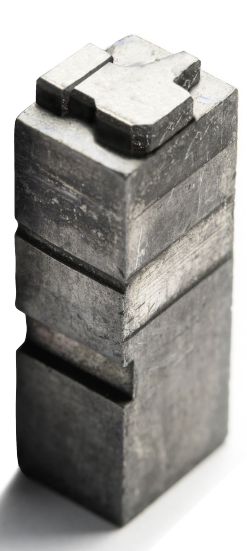 “Print is not dead.”
“Print is not dead.”
Good. That’s settled.
After all, a global industry that does US$97 billion in revenue — and is actually growing again — can hardly be on death’s door. And while no one disputes the ascendancy of digital, non-digital revenue will still account for 75 per cent of magazine media industry revenue in 2016, according to the FIPP World Magazine Trends 2014-2015 report.
It’s not like print is hanging on by its fingernails, either.
Print magazines: Some serious staying power
Consider the following statistics:
• In 2015, the magazine media industry is forecast to [reverse years of decline and] record 0.2 per cent year-on-year growth (FIPP Trends Report)
• With a share of 91 per cent, print is still a strong revenue driver in Europe in 2013 (FIPP Trends Report)
• Latin America expects a growth of 13 per cent in 2016 to a total of US$1.7 billion (FIPP Trends Report)
• Printed magazine advertising delivered the highest ROI of all media channels, 11 per cent higher than TV and 22 per cent higher than online in the UK (PPA Magonomics)
• The top 25 US print magazines reach more adults and teens than the top 25 regularly scheduled US primetime TV shows (Magazine Media Association, MMA Magazine Media Factbook 2015)
• 91.5 per cent of the German population over 14 years old read print publications, [compared with 72 per cent online] (Trends 2014-15. VDZ)
• Readership in the US is consistent across generations, seeing less fluctuation among age groups than TV, internet and radio. (MMA)
• 93 per cent of Canadian households with CAD$100,000+ income read print magazines in preference to other editions (Magazines Canada)
• Consumers are spending a significant amount of time — 40 minutes on average — reading each print issue (MMA)
• Some 95 per cent of all Finns ages 12 year and up read at least one printed magazine title, with an 87 per cent share of printed magazine readers among the digi-natives. Average time spent reading a magazine is about one hour. (Trends 2014-15 – Finnish Periodical Publishers Association, FPPA)
• Students age 18-24 prefer reading their favourite magazines in print (Magazines Canada)
• More than 150 US print magazine titles have thrived for more than 50 years; only nine TV programmes can say the same (MMA)
While all of that might seem like a case of whistling by the graveyard, there is enough evidence of publisher, editor, and advertiser innovative genius, and readers responding positively to that genius, to make the future of print appear strong indeed.
Just look at how many magazines launched in 2014: In the United States alone, 234 new print magazines made their debut, up 21 per cent from 2013, according to Professor Samir Husni, author of the annual Samir Husni’s Guide to New Magazines in the US.
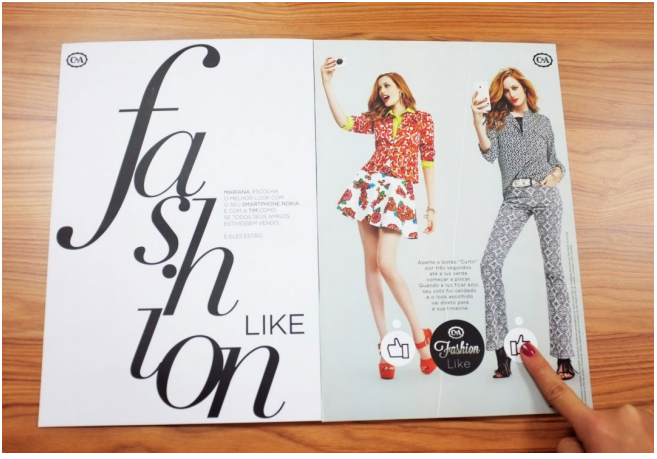
A stratospheric launch
One launch in particular was spectacular: Hearst’s Dr. Oz The Good Life opened in February 2014 with a rate base of 450,000, which is impressive enough, but this year it will increase that rate base to 800,000. Dr. Oz... became the first magazine since the 2000 launch of O The Oprah Magazine to have to go back to the printing presses for a second run of its inaugural edition.
Dr. Oz doesn’t own the skyrocketing launch turf. The 2012 Advertising Age Launch of the Year Magazine, Home and Garden TV (HGTV) Magazine (another from Hearst), also launched with an average paid circulation of 450,000, also increased its rate base to 800,000 a year later, and this July 2015 will bump it up again, this time to 1.1 million. In its short life, HGTV Magazine has become the fourth best-selling title on US newsstands.
FOLIO magazine’s annual survey of US city and regional magazines also turned up a passion for new products, with more new print launches scheduled for 2015 than in any year since 2009.
Two guerrilla launches from a publishing guerrilla
Last fall, Hearst Magazines surprised New Yorkers with an army of street teams handing out 50,000 free glossy millennia-focused fashion magazines throughout Manhattan, Brooklyn, and Queens.
Over four weekly editions, TrendingNY covered fashion, beauty and culture in the Big Apple, giving readers “a fast, fresh look at the hottest things to see, experience and buy in New York City,” according to the company. Advertisers in the pilot programme included Banana Republic, Bloomingdale’s, Estée Lauder and Macy’s.
“I love that it caters to NYC chic lady lifestyle,” said one reader. “The recommended events, shops, anecdotes… all combined with the standard fashion magazine elements make it the perfect NYC fashionista’s catalogue.”
The launch was so successful, Hearst has committed to producing nine issues in 2015, one edition each in the first week of the month starting in April, doubling the print run to 100,000 copies, committing to a minimum of 52 pages each, and going to a heavier, glossier cover stock.
Hearst’s Marie Claire also launched a “pop-up” magazine in New York last year. In March, Hearst printed 30,000 copies of first issue of Branché (which means “of the moment” or “plugged in”). Only available from street teams in the city and only over five days in March, the magazine offered “a completely new take on what’s new and what’s hot, both in the City and around the world,” according to Hearst.
The first pop-up edition was 42 pages, 22 of editorial and 20 of advertising, covering categories like fashion, retail, beauty, and more, and including brands such as Swatch, AG Jeans, Smartwater, Starbucks, Essie, May- Print 183 innovation in magazine media 2015-2016 belline New York, Cover Girl, and more.
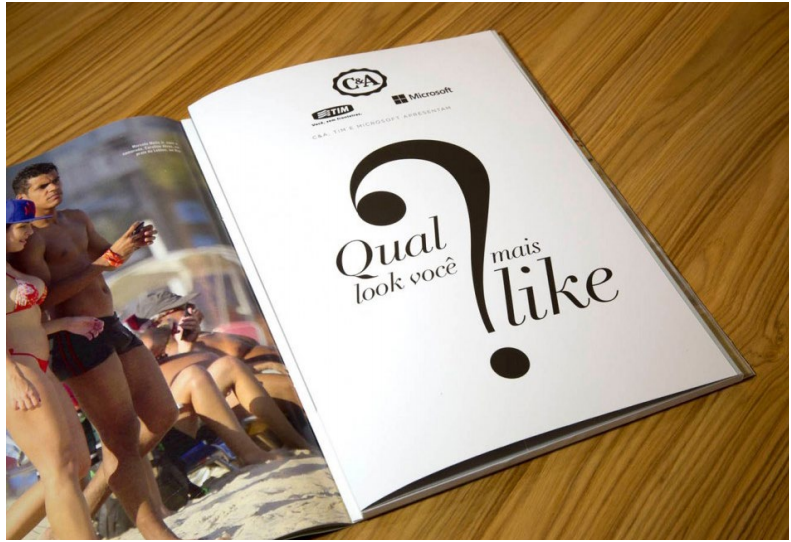
Branché popped up again over the July Fourth holiday weekend in NYC and the Hamptons with 40,000 copies this time. A third pop-up occurred in the fall, but this time Los Angeles was added to the circulation area. And this time there was a twist: each day for five days, 50 lucky readers in each city received a canvas and leather Branché tote bag designed by Reece Hudson full of beauty products ($650 value).
This launch was also successful and Branché will pop up again in NYC and LA this spring 2015.
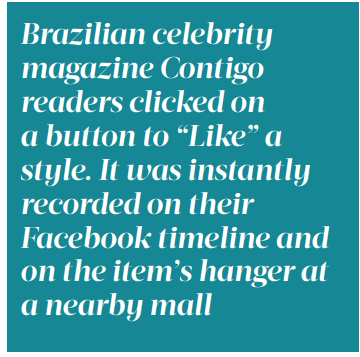 The mini-barbarians are at the gate
The mini-barbarians are at the gate
In this digital world where entire companies can be launched in minutes and at far less cost than before, it should be no surprise that print magazine start-ups are no exception. Feisty, unknown entrepreneurs have a new, uniquely 21st century source of launch capital: the fundraising site Kickstarter.
A quick perusal of Kickstarter reveals an impressive list of print launches, ranging from publications about video gaming, football, and women’s interests to wine, skateboarding, design, office culture, food, and more.
The unique (and brilliant) feature of the Kickstarter process is that magazine entrepreneurs are bypassing venture capitalists and going directly to the potential audience, people interested in their subject (your readers or potential readers) for their funding. What better litmus test is there: Will readers put their own hard-earned money behind a concept?
The fact that so many startups are being funded translates into a vote of no-confidence in the existing publications in that niche.

Take Cherry Bombe, for example. Its founders raised US$42,000 on Kickstarter in 2013 to launch a biannual indie foodie magazine, a niche that could hardly be described as underserved by existing magazines. Since the launch of Cherry Bombe, however, they’ve sold out 10,000 of each edition (even at a hefty US$18 cover price), launched their own food event series, and started Radio Cherry Bombe, a talk show for foodies.
While the creation of new print products is a healthy sign, it’s the health of existing print products that must carry the industry through the transition from purely print to multi-media revenue streams.
A print ad connected to your Facebook page
How about a print ad that allowed readers to actually “Like” a fashion look and have that “Like” show up instantly on their Facebook page and on the rack of the item itself at the store? All from a print ad!
Brazilian creative agency, DM9DDB, collaborated with Microsoft and telecommunications provider TIM to embed a chip in a print ad for fashion store chain C&A. After registering with C&A through Facebook, consumers received a copy of the magazine Contigo.
After that, the interaction was effortless. Consumers did not have to activate their computers, cell phones or mobile devices. They just touched the “Like” button on one of the print ads, and the “Like” was instantly recorded on their Facebook timeline. The “Likes” were also transmitted to the C&A store in the Marumbi Mall where the real-time results were displayed for each item hung on special hangers with a real-time digital read-out of the number of “Likes”.

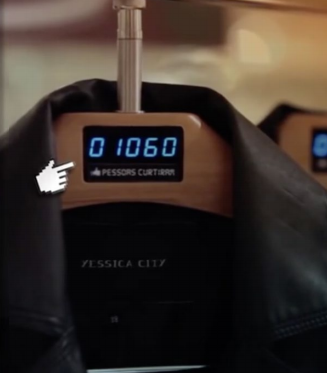
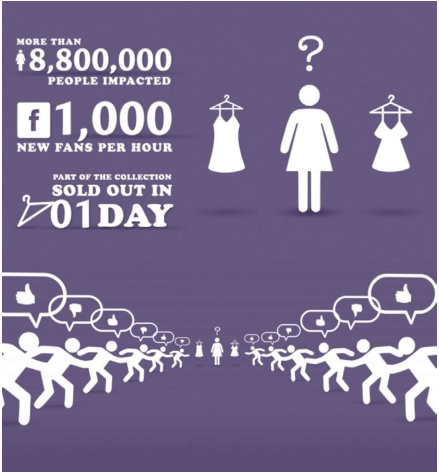
Many print publications struggle with figuring out how to draw in younger readers. A newspaper in Japan decided that the best way to draw young people in was to meet them where they are.
Research data told the Mainichi Newspaper that young Japanese bought lots of water bottles every day. In a stroke of genius, the newspaper decided to print a summary of its news on the bottle wrapper, along with a QR code enabling the youths to get real-time updates as well as more depth.
The paper also sold advertising on the wrapper, enabling them to reduce the price of the bottle to a level affordable by young people.
The results? Mainichi sold an average of 3,000 bottles each month at each sales outlet. The experiment received worldwide news coverage, helping to raise awareness of Mainichi generally but also among young people. And the innovation was so appealing that Mainichi received inquiries from advertisers, creating a new revenue source for the newspaper.
Advertisements weren’t the only area of innovation in print.
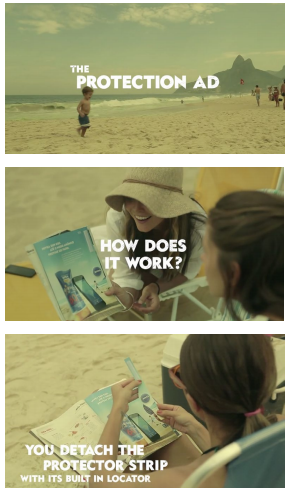
Print as the doorway to interactivity
And that’s where innovation is flourishing, especially in the marriage of print with digital. Advertisers, in particular, stand out for their creativity.
Take Nivea, the global skin and body care brand, for example. Last year, they created a print ad that actually powered cell phones. Nivea told sun worshippers they should not have to leave the beach because they were sun-burnt (use Nivea cream) or their mobile phone died (plug into their print ad).
Nivea affixed a wafer-thin solar panel to one side of a print page and put a phone plug on the other, so readers could power up as they lathered up with sunscreen.
Not missing a beat, Nivea this year solved another consumer need: Keeping track of children at the beach. This time, Nivea created a print ad with a tear-off bracelet containing a Bluetooth chip. The bracelet could be wrapped around the wrist of a child and linked to an app, turning the bracelet into a beacon and the app into 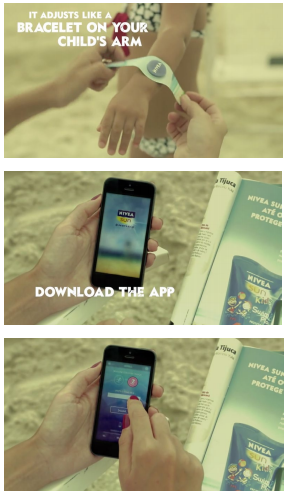
a radar screen that showed parents exactly where their child was. If the child wandered past a pre-set distance, the app triggered an alarm.
Like the phone charger, the bracelet was a huge hit. Nivea Sun Kids become the solar protection leader for the first time in the Brazilian market. Sales increased 62 per cent, pushing Sun Kids ahead of its main competitor by 13 per cent, according to Nielsen Research. NIVEA also won seven Lion awards at Cannes Lions Festival 2014, including a Mobile Grand Prix.
Covers re-imagined
Covers were re-imagined in a big way, especially at Hearst (again!).
Covers got zippers that unzipped, doors and windows that opened, pre-folded paper that converted to an origami creation, back pages that wrapped around covers to create multiple covers, and more.
“The print medium has to be innovative and reinvent itself,” Michael A. Clinton, Hearst Magazines publishing director and president for marketing told The New York Times.
“In a world of click, swipe, delete, where a lot of images are fleeting, the unique selling proposition of the magazine world is our covers. And in a world of fragmentation and clutter, advertisers are looking for opportunities to make big statements. This is our way of keeping the medium strong.”
Hearst did 20 innovative covers in 2014 with some of its biggest brands, including Cosmopolitan, Good Housekeeping, Harper’s Bazaar, and Woman’s Day. More are planned for 2016.
“No one can deny the realities of how readers are spending time with digital, but print still has tactile, physical qualities that consumers want to engage with,” Clinton said. “And in the beauty category, touch and feel are important.”
“Print is normally a passive medium, but if you put the right thing in front of the right people at the right time, they might do something,” Joel Quadracci, chairman and CEO of Quad/Graphics which prints the Hearst covers, told The Times.
“When you get them to open a window or peel off a sticker, you get a higher response rate.” Print innovation is not all about ads and covers. Enthusiasts make for healthy titles one of the strongest segments of print publishing is the enthusiast market.
Publications targeting very niche audiences and providing unique content those readers cannot get anywhere else do very well.
“Our objective is to make the print product grow, in circulation and advertising.” Active Interest Media chairman and CEO Skip Zimbalist told attendees at FOLIO’s recent Growth Summit. Active Interest Media publishes titles like Backpacker, Black Belt, Arts and Crafts Homes, Better Nutrition, Power & Motor Yacht, Ski Magazine, Vegetarian Times, and Yoga Journal.
Zimbalist told attendees that his company had invested in circulation marketing, including direct mail. “We have not found declining yields in mail over the last 10-15 years,” he said.

AIM also invested in upgrading paper quality, a change that was noticed by advertisers, including some who had dropped away but were enticed back by the improvements (eyewear company Oakley returned with a $250,000 schedule).
“The lesson is the advertiser wants a beautiful product to showcase their brand,” Zimbalist said in his keynote address. “And the reader, if they’re paying four bucks, would just as soon pay five bucks. It’s a matter of asking the reader to pay a little more for what they’re getting. If they’re not, in our case, we’re not sure we want them or need them.”
From hundreds of print start-ups to crazy covers and interactive print advertisements, magazines on paper continue to delight and surprise (and satisfy) our readers.
High-quality, unique content and advertising in print (often paired with digital) that both speaks to our readers’ needs and that they cannot get anywhere else will carry us successfully into the 21st century.
And in case you weren’t convinced at the beginning, you can say it now with confidence:
Print is not dead.
10 Kickstarter magazines aiming to eat a little of your lunch
A Google search for “Kickstarter Magazine Projects” returns dozens of launches like those below. They all share a passion for their subject… and a disdain for existing publications in their niche (why else would they dare to compete with you?). Beware. These entrepreneurs did not go to venture capitalists for their funding. They went straight to the people interested in the subject matter (your existing or potential customers). Kickstarter is like the ultimate focus group: Not only will they tell you if they like or dislike your idea; if they like it, they’ll put their own money behind it. Many of the magazines below raised their funding in a matter of days, an indication that there is a definite need for each publication in each niche.
The list is presented in order of the amount of start-up funds raised:
1. RETRO (Raised: US$75,759)
An independent print, digital and online publication dedicated to the past, present and future of the video gaming pastime; a publication that will hearken back to the amazing magazines from the 80’s, 90’s and early 2000s (Retro’s kickstarter page)
2. TOAST (Raised: US$36,786)
A space for writers, chefs, illustrators and photographers to explore the food topics that matter most to them, irrespective of trends (Toast’s kickstarter page)
3. GOLLY (Raised: US$34,237)
A modern, irreverent, inclusive, new approach to women’s magazines (Golly’s kickstarter page)
4. CHANCE (Raised US$30,281)
A large format photography magazine that looks at the world through the lens of theatrical design (Chance Magazine’s kickstarter page)
5. DOWNGRADE MAGAZINE (Raised: US$26,362)
The collaborative effort of five photographers working to capture the essence of downhill skateboarding (Downgrade Magazine kickstarter page)
6. FIERA (Raised: US$24,809)
A biannual magazine discovering new talent at the world’s design fairs (Fiera Magazine kickstarter page)
7. OpenHouse (Raised US$21,679)
An opportunity to meet people who make workshops, talks, dinner and concerts, or simply people who open their homes to unknown guests to stay for their holiday, to experiment in a different way to travel (OpenHouse Magazine kickstarter page)
8. NOBLE ROT (Raised US$17,632)
An alternative magazine about wine, with a healthy dose of music and food (Noble Rot Magazine kickstarter page)
9. DAY JOB (Raised: US$15,249)
A print magazine that explores modern work culture through the personal pursuits and values of people around the world (Day Job Magazine kickstarter page)
10. PARALLEL (Raised US$9,869)
A new quarterly women’s magazine that focuses on life through a feminist lens. Aimed at late teenage to young adult women. (Parallel magazine kickstarter page)


